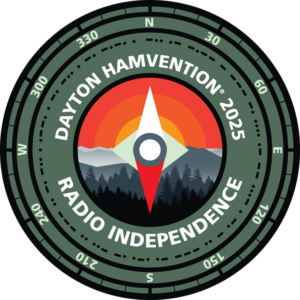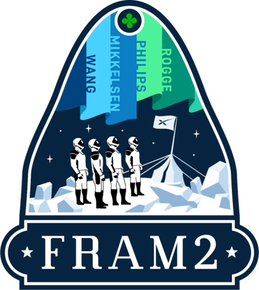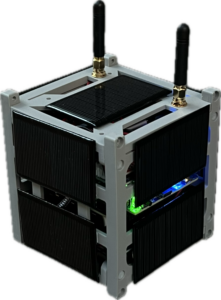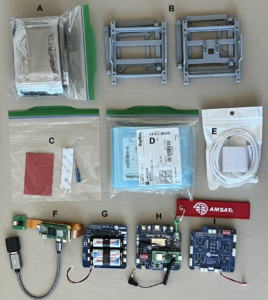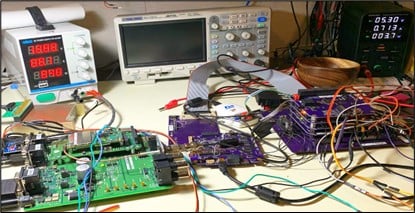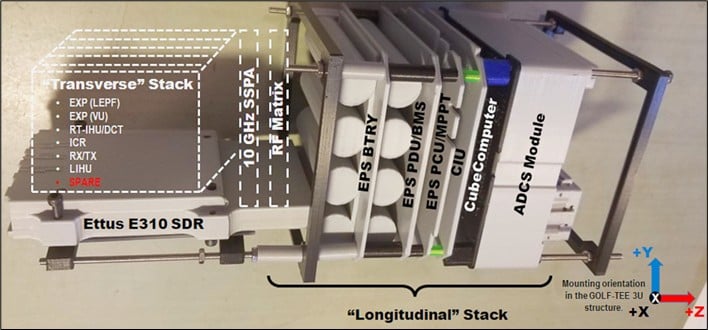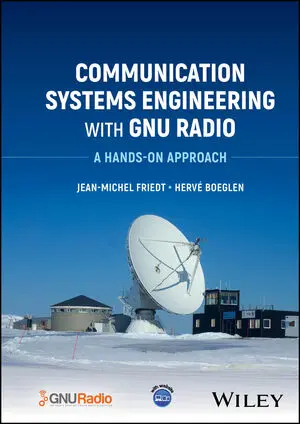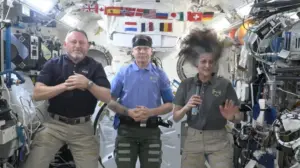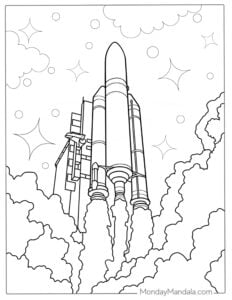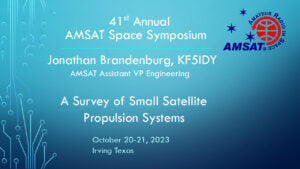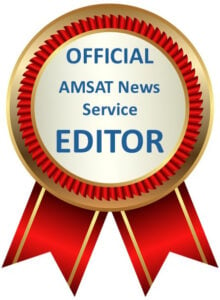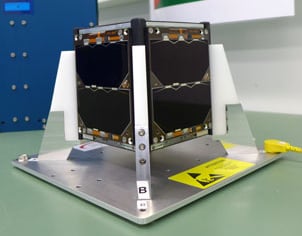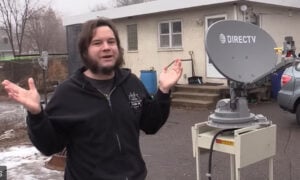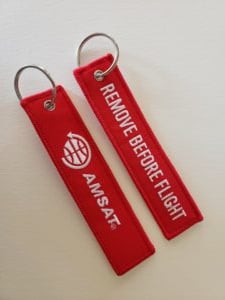In this edition:
- Hotel Reservations for 43rd AMSAT Space Symposium and Annual General Meeting Now Available
- Hard Copy Getting Started in Amateur Satellites Now Available
- Bankston Introduces Hamvention 2025 AMSAT Forum
- Burns Fisher – The Legacy of AMSAT Flight Software
- SkyRoof – A Specialized Satellite Tracking Program for SDR’s
- VUCC Satellite Standing June 2025
- DXCC Satellite Standing June 2025
- Changes to AMSAT-NA TLE Distribution for June 13, 2025
- ARISS News
- AMSAT Ambassador Activities
- Satellite Shorts From All Over
The AMSAT News Service bulletins are a free, weekly news and information service of AMSAT, the Radio Amateur Satellite Corporation. ANS publishes news related to Amateur Radio in Space including reports on the activities of a worldwide group of Amateur Radio operators who share an active interest in designing, building, launching and communicating through analog and digital Amateur Radio satellites.
The news feed on http://www.amsat.org publishes news of Amateur Radio in Space as soon as our volunteers can post it.
Please send any amateur satellite news or reports to: ans-editor [at] amsat [dot] org.
Sign up for free e-mail delivery of the AMSAT News Service Bulletins via the ANS List; to join this list see: https://mailman.amsat.org/postorius/lists/ans.amsat.org/
Hotel Reservations for 43rd AMSAT Space Symposium and Annual General Meeting Now Available
Book your room now! The 43rd Annual AMSAT Space Symposium & Annual General Meeting will be held Thursday, October 16th through Sunday, October 19th. The site of the 2025 event will be the Holiday Inn & Suites Phoenix Airport North.
For your planning purposes, the overall schedule for the event is as follows:
Thursday, October 16th
0900 – 1700 Board of Directors Meeting
Friday, October 17th
0900 – 1200 Board of Directors Meeting
1300 – 1700 Symposium Presentations
1800 – 2100 Reception & Auction
Saturday, October 18th
0900 – 1200 Symposium Presentations
1300 – 1500 Symposium Presentations
1500 – 1700 Annual General Meeting
1800 – 1900 Reception
1900 – 2100 Banquet
Sunday, October 19th
0800 – 1000 Members Breakfast

The Holiday Inn & Suites Phoenix Airport North is located minutes away from Phoenix Sky Harbor airport and features:
- Free airport shuttle and parking
- Resort-style facility with beautiful courtyard, outdoor pool, brew pub.
- Free breakfast
- Fully updated rooms
- All rooms are two-room suites with choice of 2 Queen beds or 1 King Bed
- Affordable rates of only $129 plus tax.
Make your reservations now!
You must make your reservation directly with the hotel to enjoy this special rate.
Group Code: P7C
Group Name: AMSAT
BY PHONE
Reservations: 877-424-2449
ON LINE
https://www.ihg.com/holidayinn/hotels/us/en/phoenix/phxff/hoteldetail
(Under Rate Preference: Select the “Group Rate” button and enter “P7C” then press “Enter” before continuing.)
[ANS thanks AMSAT for the above information.]
Hard Copy Getting Started in Amateur Satellites Now Available
The hard copy edition of AMSAT’s completely updated Getting Started With Amateur Satellites is back in stock! This is the complete guide to get you working the amateur satellites including tracking applications, choosing an antenna, radio selection, and step-by-step operating instructions for the FM, SSB, and digital satellites. This book is for the beginner through the veteran satellite operator. In addition to practical tips and tricks, the book includes operating techniques so that you sound like an experienced operator.
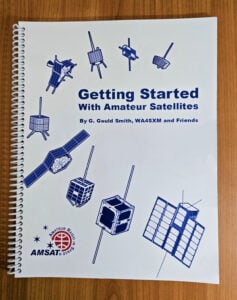
The chapters include:
- Introduction to Satellites
- Satellite Basics
- Locating Amateur Satellites
- Your Antenna System
- Your Radio System
- Operating the FM Satellites
- Operating the SSB/CW Satellites
- Receiving Satellite Digital Data
- Operating the Digital Satellites
- International Space Station
- Reference Material
- Upgrading Your Amateur Satellite Station
This completely updated version is spiral-bound so it lays flat for easy reading The book is printed in full color and is 128 pages.
Order your copy at https://www.amsat.org/product/getting-started-with-amateur-satellites-hard-copy/.
Sorry, U.S. mailing addresses only.
[ANS thanks AMSAT for the above information.]
Your 2025 AMSAT President’s Club Coin Is Waiting!
Celebrating the 40th Anniversary of Amateur Radio on Human Spaceflight
Help Support GOLF and Fox-Plus.
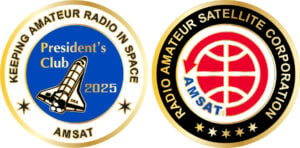
Join the AMSAT President’s Club today and help
Keep Amateur Radio in Space!
https://www.amsat.org/join-the-amsat-presidents-club/
Bankston Introduces 2025 Hamvention AMSAT Forum
AMSAT President Robert Bankston greeted attendees of the Hamvention Saturday, May 17, 2025 AMSAT Forum, kicking off the session which included short presentations by several AMSAT Engineering leaders.
Bankston explained that the organization was officially formed in 1969 saying, “We’ve been keeping Amateur Radio in space for more than 50 years starting with OSCAR 1 in 1961.” OSCAR-1 was launched on December 12, 1961 as a secondary payload on the Thor-Agena rocket with a US Air Force mission. OSCAR-1 was the first satellite ever to be deployed as a secondary payload from a launch vehicle.
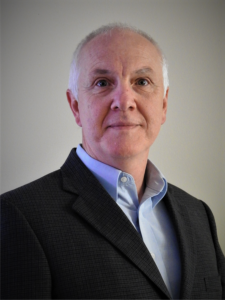
“The bureaucratic efforts required to secure permission to launch OSCAR-1 greatly exceeded the effort required to build the satellite. It established the precedent for all subsequent secondary payload launches for the next five decades.”
“Speaking of the fun of being a part of AMSAT,” Bankston said, “Our primary goal is to have Amateur Radio available in space for you to operate with. And if you haven’t done it before, it’s a blast. You’re chasing that little chunk of radio, flying through space at 17,000 miles an hour and trying to keep up with it, whether it be by hand or with automated azimuth and elevation tracking antennas. Accomplishing that is great stuff.”
Bankston told the audience that even more than operating via satellite communications, many AMSAT members get the opportunity to design and build a satellite that goes up into space. “AMSAT has a lot to offer to everybody. We are looking forward to enhanced relationships with school-aged students and their teachers via our new Youth Initiative which includes online self-learning.
“Currently AMSAT has about 4,000 members, the majority of whom are in the United States. AMSAT members also are in some 53 countries. There are other AMSAT organizations around the world, in such countries as the UK, Spain, Germany, Japan, Brazil and many others.
“AMSAT shares a strategic relationship with the U.S. Amateur Radio on the International Space Station (ARISS) organization. That group facilitates worldwide space-oriented education programs primarily in middle and high schools. Student activities in the ARISS program culminate with a capstone of a live question and answer session via Amateur Radio with an astronaut aboard the International Space Station (ISS). More than 100 astronauts have obtained and use an Amateur Radio license issued by their home country to legally transmit via radios installed on the ISS.”
The forum session provided an update on current activities. Bankston said, “the most important part of today’s update is what our AMSAT engineers are working on.” The lineup of engineering professionals who presented talks began with Jerry Buxton, AMSAT VP of Engineering and his team. Buxton spoke about the importance of AMSAT’s volunteer engineers and an overview of current AMSAT projects.
[ANS thank Robert Bankston, AMSAT President for the above information.]
Burns Fisher – The Legacy of AMSAT Flight Software
Note; Burns Fisher, WB1FJ, AMSAT Senior Software Engineer spoke at the 2025 Hamvention AMSAT Forum about his involvement in the development of flight software for AMSAT satellites and progress to date. His non-technical presentation helped attendees understand the scope of AMSAT software advancements during the past 15 years. This is Par 1 of a 2 Part series.
“I began working on Fox-1 software during 2010. The Fox-1 series of cubesats progressed from A through B, C, D and E. Software for each new satellite is based on that original Fox-1A software, including the five FOX-1 satellites as well as those flown by University of Washington and University of Maine. This is because we make AMSAT radios and processors available to universities so our software is used to control the AMSAT boards.
“Fox-1A was launched in 2015. Since then we’ve refined, added to and reused the same fundamental programs, although each satellite features different capabilities and many other individual program refinements. Specific variations include satellite bus data configurations connecting new subsystems or improved modules within the flight computer. We almost always discover a few bugs in the current satellite which we try to fix in the next one.
“Commands transmitted from a ground station control the Amateur Radio repeater or transponder receive and transmit functions as well as other satellite functions. These commands use encryption to securely authenticate that commands are coming from an AMSAT ground station. Controlling devices like satellites is the only time that encryption is allowed in Amateur Radio.
“In addition, the flight software collects telemetry data from various systems in the satellite, combines it and transmits it back to earth so we can read and use the data to monitor our satellites and the investigators who provided science experiments can get their results.”
“FoxTelem Software for Windows, Mac, and Linux platforms can demodulate, store and analyze telemetry signals from AMSAT cubesats. FoxTelem users, who do not have to be licensed amateurs can upload received telemetry data to the AMSAT server so that it can be used by scientists and researchers whose experiments fly AMSAT satellites as well as by AMSAT engineers monitoring the health of the spacecraft.” (More details or download here: https://www.amsat.org/foxtelem-software-for-windows-mac-linux/)
Burns continued, “If you want to know what the flight software does, the easiest way to see this is to look at the tasks within it. You can think of tasks as being like applications on your phone. This chart shows the list of current flight software tasks.
“One flight task example is a diagnostic task for debugging and testing systems on the bench. Another software task controls experiments such as the Vanderbilt University radiation experiment and the Virginia Tech camera.
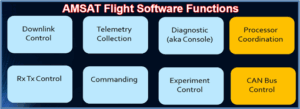
The yellow boxes represent two new tasks coordinating multiple processors, and controlling a new electrical bus called CAN. GOLF flight software is still based on the original Fox-1 software but is more complicated and required an enormous amount of additional programming.
“GOLF satellites have a Controller Area Network bus (CAN bus) designed to enable efficient communication between processors and other devices. The CAN bus concept originated in the Automotive Industry to connect automotive ECUs (Electronic Control Units). Its purpose is to reduce the complexity and cost of electrical wiring in automobiles by multiplexing different kinds of data. Multiplexing combines multiple input signals into a single output signal for transmission over a shared channel. There are multiple processors on GOLF.”
While Fox satellites are all in Low Earth Orbits between approximately 500 km and 800 km altitudes, Burns needs to test newly added functions required for navigation and propulsion, part of AMSAT’s strategic goals involving highly elliptical orbits for wide access satellite missions.
(Note: Part 2 of this series will appear in next week’s ANS Weekly Bulletin.)
[ANS thanks Burns Fisher, WB1FJ, AMSAT Senior Software Engineer for the above information]
Need new satellite antennas?
Purchase M2 LEO-Packs from the AMSAT Store.
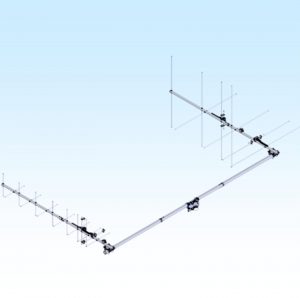
When you purchase through AMSAT, a portion of the proceeds goes towards
Keeping Amateur Radio in Space.
https://amsat.org/product-category/hardware/
SkyRoof – A Specialized Satellite Tracking Program for SDR’s
SkyRoof , developed by Alex Shovkoplyas, VE3NEA, is a satellite tracking and radio control program that focuses on software design radio (SDR) operation. The program supports SDR-based SSB/CW/FM receivers with RIT and Doppler tracking. Frequency tuning is done visually with a mouse.
It provides detailed information about all satellites that transmit in the ham bands while all satellite traces on the waterfall are labeled with satellite names, and the boundaries of the transponder segments.
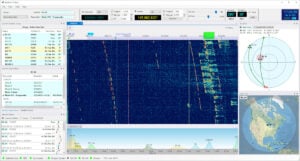
SkyRoof provides the usual pass prediction for selected satellites and visual representation of the current satellite position and future passes in several formats including Sky View – the view of the sky from your location; Earth View – the view of the Earth from the satellite; Time Line – the satellite passes on the time scale; and Pass List – the details of the predicted passes. The SDR-based waterfall display covers the whole satellite segments on the VHF and UHF bands, with zoom and pan.
The program supplies audio and I/Q output to external programs via a virtual audio cable (VAC). CAT control of an external transceiver is also said to be provided along with antenna rotator control.
SkyRoof is currently available only for MS Windows. It is open source and can be downloaded for free at https://ve3nea.github.io/SkyRoof/index.html.
[ANS thanks Alex Shovkoplyas, VE3NEA for the above information.]
VUCC Satellite Standing June 2025
Here is the VUCC Satellite Award/Endorsement Change Summary for May 01, 2025 to June 01, 2025.
Call |
May |
June |
|---|---|---|
| DL2GRC | 1501 | 1650 |
| AA5PK | 1500 | 1524 |
| OZ9AAR | 1100 | 1300 |
| EA2AA | 1050 | 1085 |
| JN2QCV | 1016 | 1075 |
| W8LR | 900 | 905 |
| AA8CH | 876 | 901 |
| WD9EWK-(DM43) | 774 | 779 |
| AF5CC | 651 | 656 |
| RA3S | 107 | 654 |
| KA9CFD | 500 | 608 |
| AD2DD | 517 | 604 |
| HB9GWJ | 575 | 602 |
| AB5SS | 411 | 549 |
| HC2FG | 413 | 477 |
| K3HPA | 350 | 375 |
| N4QWF | 336 | 350 |
| WD9EWK-(DM41) | 229 | 235 |
| SV8CKM | 140 | 215 |
| WD9EWK-(DM31) | 206 | 210 |
| N6UTC-(DM15) | 150 | 177 |
| DH0GSU | 156 | 170 |
| OH3DP | New | 150 |
| OE6JWD | New | 101 |
| WB5TX | New | 101 |
| W6OR | New | 100 |
Congratulations to the new VUCC Satellite holders!
OH3DP
OE6JWD
WB5TX
W6OR
OH3DP is first VUCC Satellite holder from Finland and KP10.
OE6JWD is first VUCC Satellite holder from JN77.
[ANS thanks Jon Goering, N7AZ for the above information.]
DXCC Satellite Standing June 2025
Here is the DXCC Satellite Award/Endorsement Change Summary for
May 01, 2025 to June 01, 2025.
Call |
May |
June |
|---|---|---|
| DL2GRC | 184 | 188 |
| F4BKV | 171 | 187 |
| SA5IKN | 100 | 184 |
| OZ9AAR | 153 | 173 |
| HB9RYZ | 157 | 163 |
| DL6GBM | 157 | 160 |
| YO9HP | 131 | 157 |
| IK1IYU | 146 | 153 |
| IK5CBE | 141 | 143 |
| TF1A | 112 | 113 |
| W8LR | 108 | 112 |
| YL2GC | New | 101 |
Congratulations to the new DXCC Satellite holder!
YL2GC
YL2GC is first DXCC Satellite holder from Latvia and KO26.
[ANS thanks Jon Goering, N7AZ for the above information.]
Want to fly the colors on your own grid expedition?
Get your AMSAT car flag and other neat stuff from our Zazzle store!
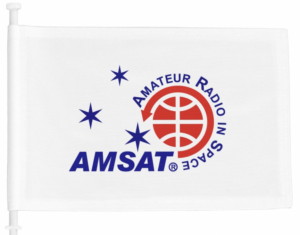
25% of the purchase price of each product goes towards
Keeping Amateur Radio in Space!
https://www.zazzle.com/amsat_gear
Changes to AMSAT-NA TLE Distribution for June 13, 2025
Two Line Elements or TLEs, often referred to as Keplerian elements or keps in the amateur community, are the inputs to the SGP4 standard mathematical model of spacecraft orbits used by most amateur tracking programs. Weekly updates are completely adequate for most amateur satellites. TLE bulletin files are updated daily in the first hour of the UTC day. New bulletin files will be posted immediately after reliable elements become available for new amateur satellites. More information may be found at https://www.amsat.org/keplerian-elements-resources/.
The following satellite has been removed from this week’s AMSAT TLE distribution:
NOAA-18 NORAD Cat ID 28654 Decommissioned 1740 UTC 06/06/2025
[ANS thanks Joe Fitzgerald, KM1P, AMSAT Orbital Elements Manager for the above information]
ARISS NEWS
Amateurs and others around the world may listen in on contacts between amateurs operating in schools and allowing students to interact with astronauts and cosmonauts aboard the International Space Station. The downlink frequency on which to listen is 145.800 MHz worldwide.

Completed Contacts
Aznakaevo students, Aznakaevo, Republic of Tatarstan, Russia, direct via RC4P
The ISS callsign was RSØISS.
The crewmember was Sergey Ryzhikov.
The ARISS mentor was RV3DR.
Contact was successful Sunday, June 8, 2025 at 09:07 UTC.
Mountain Creek State High School, Mountain Creek, Queensland, Australia, telebridge via IK1SLD
The ISS callsign was OR4ISS.
The crewmember was Takaya Onishi, KF5LKS.
The ARISS mentor was VK4KHZ.
Contact was successful Monday, June 9, 2025 at 08:10 UTC.
Upcoming Contacts
Axiom 4 group 3 telebridge via ON4ISS
Rzeszow University of Technology, Rzeszow Poland.
The ISS callsign is presently scheduled to be OR4ISS.
The scheduled crewmember is Slawosz Uznanski-Wisniewski, SQ7AS.
The ARISS mentor is K4RGK.
Contact is go for Tuesday.June 17, 2025 at 09:39 UTC.
Axiom 4 group 4 telebridge via ON4ISS
University of Wroclaw, Wroclaw, Poland.
The ISS callsign is presently scheduled to be OR4ISS.
The scheduled crewmember is Slawosz Uznanski-Wisniewski, SQ7AS.
The ARISS mentor is K4RGK.
Contact is go for Wednesday, June 18, 2025 at 08:50 UTC.
Axiom 4 group 1 telebridge via IK1SLD
Hungarian Scout Association, Budapest, Hungary.
Debrecen – Bánki Reformed Primary School, Technical College and Vocational Training School, Debrecen, Hungary
Mezoberényi Petofi Sándor Evangélikus Gimnázium, Kollégium és Általános Iskola, Mezöberény, Hungary
Budapesti Muszaki Szakképzési Centrum Puskás Tivadar Távközlési és Informatikai Technikum, Puskás Radio Amateur Club – HA5KHC, HA5KBF, Budapest, Hungary.
The ISS callsign is presently scheduled to be TBD.
The scheduled crewmember is Tibor Kapu, HA5TRO.
The ARISS mentor is ON6TI.
Contact is go for Wednesday, June 18, 2025 at 10:28 UTC.
Axiom 4 group 2 telebridge via IK1SLD
MOBILIS Közhasznú Nonprofit Kft., Gyor, Hungary
Széchenyi István University of Gyor – SZESAT, Gyor, Hungary.
The ISS callsign is presently scheduled to be OR4ISS.
The scheduled crewmember is Tibor Kapu, HA5TRO.
The ARISS mentor is ON6TI.
Contact is go for Thursday, June 19, 2025 at 09:39 UTC.
Youth On The Air 2025, Denver, Colorado, direct via WØY
The ISS callsign is presently scheduled to be NA1SS.
The scheduled crewmember is Nichole Ayers, KJ5GWI.
The ARISS mentor is N7GZT.
Contact is go for: Thursday, June 19, 2025 at 17:25 UTC.
Watch for Livestream at https://youtube.com/live/I7JFXlzjrKc?feature=share
Axiom 4 group 5 telebridge via ON4ISS
UR Rao Satellite Centre (URSC), Dept. of Space, Govt. of India, Bengaluru, Karnataka, India.
The ISS callsign is presently scheduled to be OR4ISS.
The scheduled crewmember is Shubhanshu Shukla, VU2TNI.
The ARISS mentor is AA6TB.
Contact is go for Saturday, June 21, 2025 at 08:01 UTC.
The crossband repeater continues to be active (145.990 MHz up {PL 67} & 437.800 MHz down). If any crewmember is so inclined, all they have to do is pick up the microphone, raise the volume up, and talk on the crossband repeater. So give a listen, you just never know.
The packet system is also active (145.825 MHz up & down).
As always, if there is an EVA, a docking, or an undocking; the ARISS radios are turned off as part of the safety protocol.
Note, all times are approximate. It is recommended that you do your own orbital prediction or start listening about 10 minutes before the listed time.
The latest information on the operation mode can be found at https://www.ariss.org/current-status-of-iss-stations.html
The latest list of frequencies in use can be found at https://www.ariss.org/contact-the-iss.html
[ANS thanks Charlie Sufana, AJ9N, one of the ARISS operation team mentors for the above information.]
AMSAT Ambassador Activities
AMSAT Ambassadors provide presentations, demonstrate communicating through amateur satellites, and host information tables at club meetings, hamfests, conventions, maker faires, and other events.
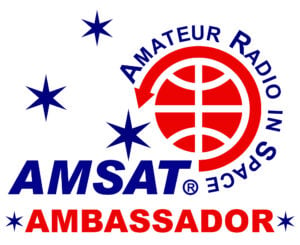
June 21, 2025
Rochester Amateur Radio Association Hamfest 2025
Barnard Fire Field
410 Maiden Lane Rochester, NY 14616
KB2YSI
August 21-24, 2025
Northeast HamXposition (HamX) & New England ARRL Convention
Best Western Royal Plaza & Trade Center
181 Boston Post Road W
Marlborough, MA 01752
http://www.HamX.org
W1EME, WD4ASW, WB1FJ
September 6, 2025
Greater Louisville Hamfest
Paroquet Springs Conference Centre
395 Paroquet Springs Drive
Shepherdsville, KY 40165
W4FCL
October 16 – 19, 2025
AMSAT Board of Directors Meeting and 43rd Annual AMSAT Space Symposium & Annual General Meeting
Holiday Inn & Suites Phoenix Airport North
1515 North 44th Street
Phoenix, Arizona 85008
Details at https://www.amsat.org/2025-symposium/
[ANS thanks Bo Lowrey, W4FCL, Director – AMSAT Ambassador Program, for the above information]
Satellite Shorts From All Over
-
- From September 19-21, 2025, the Bochum radome will once again be dedicated to satellite and space research. In cooperation with the Bochum Observatory, AMSAT-Deutschland e.V. is offering a varied and informative program aimed at AMSAT members and all space enthusiasts. The focus is on current developments and future prospects for national and international amateur radio satellites and other space projects. Lectures, presentations and exciting discussions will provide participants with valuable insights into the latest technologies, missions and research projects in space travel. As was the case last year, the Space Days begin on Friday with a general “come together” and end on Sunday with the General Assembly. The exact schedule and further plans here on the website as soon as possible. Anyone interested in giving a presentation is welcome to contact them in advance at [email protected].
-
- The SpaceX launch of four private astronauts has been delayed again. The Axiom Space’s Axiom Mission 4 (Ax-4) mission to the International Space Station (ISS) had been scheduled to launch atop a SpaceX Falcon 9 rocket from Florida’s Space Coast on Wednesday morning, June 11, but a propellant leak in the Falcon 9 booster nixed that plan. And now, another leak — this one in a leaky module at Ax-4’s destination, the ISS — has further postponed the liftoff indefinitely. This is the first flight for the Dragon spacecraft supporting this mission. This will be the second flight for the first stage booster supporting this mission, which previously launched a Starlink mission. [ANS thanks SpaceX.com for the above information.]
Join AMSAT today at https://launch.amsat.org/
In addition to regular membership, AMSAT offers membership to:
-
- Societies (a recognized group, clubs or organization).
-
- Primary and secondary school students are eligible for membership at one-half the standard yearly rate.
-
- Post-secondary school students enrolled in at least half time status shall be eligible for the student rate for a maximum of 6 post-secondary years in this status.
-
- Memberships are available for annual and lifetime terms.
Contact info [at] amsat [dot] org for additional membership information.
73 and remember to help Keep Amateur Radio in Space!
This week’s ANS Editor is Frank Karnauskas, N1UW.
f.karnauskas [at] amsat [dot] org
ANS is a service of AMSAT, the Radio Amateur Satellite Corporation, 712 H Street NE, Suite 1653, Washington, DC 20002
AMSAT is a registered trademark of the Radio Amateur Satellite Corporation.

